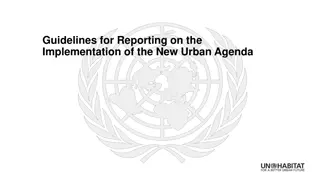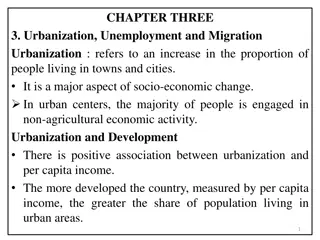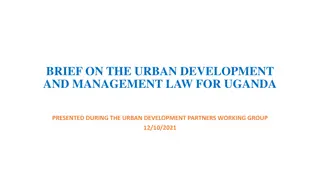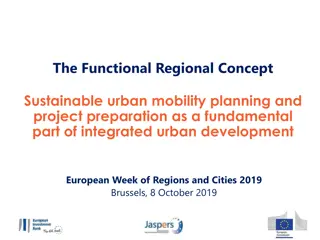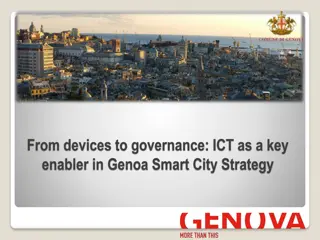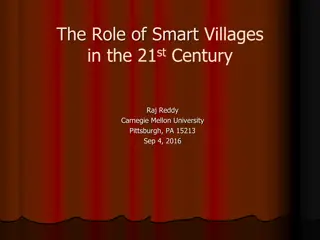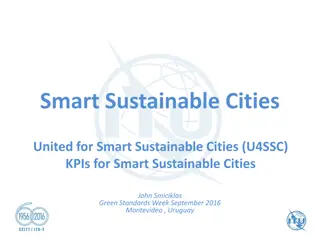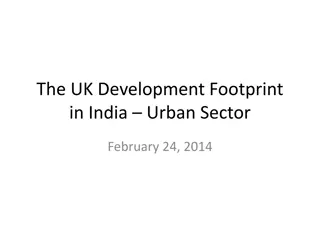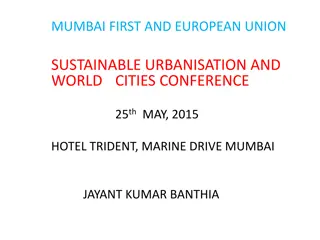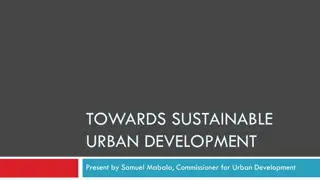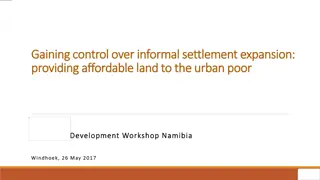Smart Growth Policies for Sustainable Urban Development
Smart growth policies promote sustainable urban development through compact, walkable neighborhoods, mixed land use, preservation of open spaces, and cost-saving strategies. These principles prioritize long-term sustainability and community collaboration, aiming to reduce sprawl, enhance transportation options, and preserve natural environments.
Download Presentation

Please find below an Image/Link to download the presentation.
The content on the website is provided AS IS for your information and personal use only. It may not be sold, licensed, or shared on other websites without obtaining consent from the author.If you encounter any issues during the download, it is possible that the publisher has removed the file from their server.
You are allowed to download the files provided on this website for personal or commercial use, subject to the condition that they are used lawfully. All files are the property of their respective owners.
The content on the website is provided AS IS for your information and personal use only. It may not be sold, licensed, or shared on other websites without obtaining consent from the author.
E N D
Presentation Transcript
SMART GROWTH POLICIES AND PUBLIC SECTOR GROWTH PRARTHNA NANDA
SMART GROWTH Redevelopment of cities and development of nearby areas like villages, towns etc Advocates compact, walkable land use Started mainly in the western countries, US, European nations etc Many countries are increasingly adopting smart-growth policies Smart growth values long term sustainability over short term plans Mainly focused on expanding households, transportation, housing, employment etc.
PRINCIPLES OF SMART GROWTH Mixed use of land. Taking benefits from Compact building design. Creating a range of housing opportunities and choices. Walkable Neighbourhoods. Foster distinctive,attractive communities. Preserve open space,farmland and critical environmental areas. Strengthen and direct development towards existing communities. Providing varieties of transportation choices. Making development decisions predictable,fair,and cost-effective. Encouraging community and stakeholder collaboration in development decisions
SMART GROWTH MIGHT SAVE MONEY Providing services at a low cost Reducing maintenance cost by spending on the existing infrastructure in a sustainable and low-maintenance way By reducing tax burden by maximising return-on-investment By preserving existing communities By reducing transportation cost by making walkable, bicycle-friendly roads Reducing medical health costs
ELEMENTS OF SMART -GROWTH COMPACT NEIGHBOURHOOD To put urban sprawl in check and increase opportunities and businesses TRANSIT-ORIENTED DEVELOPMENT Increase in betterment of transport facilities, expanding services, redevelopment of cities etc PEDESTRIAN FRIENDLY DESIGN It would reduce environmental pollution, cut costs of consumers, put them into a healthier lifestyle and bridge connections between cities and their outskirts. PRESERVING OPEN SPACES AND NATURAL ENVIRONMENT An effective implementation of smart-growth policies will ensure that the greenery of a particular area is prioritized and preserved, natural habitats remain intact and there are various open spaces for survival of different ecosystems.
WHY SMART GROWTH Smart growth provides an alternative to urban sprawl, congestion due to traffic, disconnected neighbourhoods (villages near cities) and urban decay. For environment protection, environmentalists are emphasizing on smart-growth policies to encourage forming green belts and urban-growth boundaries while planning and development Policies under smart-growth can improve public health by encouraging a pedestrian based lifestyle, with a reduction in the overall pollution levels. Cutting down the cost of electricity
POLICIES TO BRING IN URBAN GROWTH BOUNDARIES This policy was first brought in Kentucky, U.S. It is a method of containing high development to only up to a specified area. This can be achieved by reducing parking areas and making recreational parks which come under open space. A pedestrian friendly society would reduce the area under vehicle parking ZONING ORDINANCES Supporters of Smart growth seek to modify zoning ordinances to increase developmental densities or to restrict developmental work in environment- sensitive or other such vulnerable areas. Most cities of the United States have this policy.
POLICIES TO BRING IN PROVISIONS RELATED TO SOCIAL INFRASTRUCTURE Schools, libraries, sporting COMPLEXES and community facilities ARE an integral component of smart-growth communities. This is commonly known as 'social infrastructure' or 'community infrastructure . TDR (TRANSFER OF DEVELOPMENT RIGHTS) This policy will be allowing property owners belonging to developed zones to purchase rights to build at higher densities from owners belonging to zones undesirable for growth.
MEASURES FOR IMPROVING THE PERFORMANCE OF THE PUBLIC SECTOR Allowing Managerial Autonomy Performance-based Accountability through Memorandum of understanding (MOU) System Manpower Rationalization Professionalism in Management Introduction of competition Transparency in Operations of PSEs
MEASURES FOR IMPROVING THE PERFORMANCE OF THE PUBLIC SECTOR












